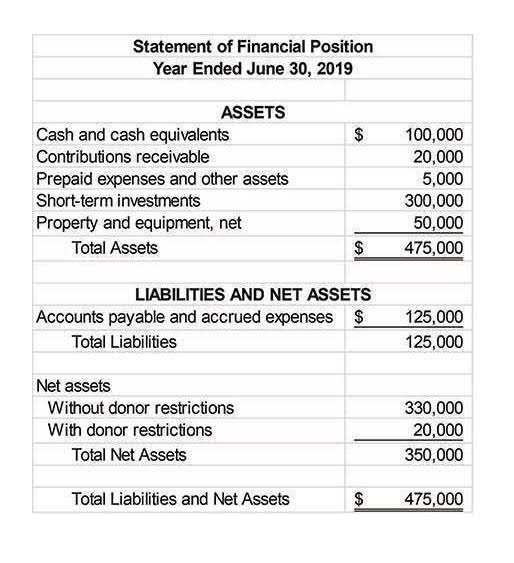What Is Retail Accounting and How Can Accounting For Retail Business Help You?

Customers are responsible for verifying the integrity of the hosted data at least every 90 days. Right Networks employs Snapshot technology to backup customer data. Snapshots are taken daily and then replicated to another physical Right Networks facility for Disaster Recovery. Diamond includes all the features of QuickBooks Desktop Enterprise Platinum edition with the exception of Enhanced Payroll. Diamond also petty cash includes QuickBooks Assisted Payroll and QuickBooks Time Elite time tracking. Get real-time, automatic inventory updates with every sale and order so you don’t run out or overstock.
Inventory Turnover
- The best retail accounting software is ideally easy to set up and use even for nonaccountants.
- One of the key challenges of running a retail business is tracking inventory, especially if you buy multiple inventory units that don’t all cost the same amount.
- To help illustrate the above retail accounting approaches, let’s look at an example.
- The first-in-first-out (FIFO) method is a common cost-flow assumption among retailers with perishable goods.
- The retail method is different — it values inventory based on the retail price of the inventory, reduced by the markup percentage.
- They also provide real-time reporting, reducing reconciliation time and improving accuracy.
The retail inventory method also allows the organization to create an inventory value report for budgeting or the preparation of financial statements. It also helps you keep track of how much inventory you have left and how much your inventory is selling to maintain your inventory levels and potentially cut down on inventory costs. Retail accounting is an inventory valuation method that allows you to estimate your inventory value assuming prices are the same across units. As your business grows, keep in mind that your accounting processes will evolve with it.
- Availability can vary and are subject to occasional downtime and may change without notice.
- Retail accounting has some upsides that make it a helpful way of valuing your inventory.
- Profitability analysis through cost accounting reveals margin potential.
- You’ll get access to live chat and email support if you purchase an add-on in the free tier or upgrade to the paid subscription.
Is It Possible to Migrate All Existing Data to a New Accounting Software?

But in order to do this, you have to know the cost of your inventory. This brings us back to inventory valuation methods, including retail accounting. In this case, it would end up being $4.75 divided by 70 dice, or approximately 7 cents per die. You know you sold 50 dice, so you match the number of items sold to the average cost of 7 cents, which is a total of $3.50 for the cost of goods sold and $1.40 for ending inventory. Retail accounting has some retail accounting upsides that make it a helpful way of valuing your inventory. However, there are some drawbacks retail businesses need to keep in mind.

Retail Accounting: What It Is, Its Challenges, and Why It Matters
- A self-employed freelancer may need only basic invoicing and expense tracking, while a retailer might require inventory accounting and automated sales tax calculations.
- Software has made many aspects of running a retail business more manageable.
- Even offering discounts on certain products would throw off your calculations.
- For a small business, maintaining a healthy cash flow is very important.
- For example, product damage, theft, depreciation, markdowns can affect the price of the inventory.
The primary reason retail accounting is different from accounting in other industries is that retail stores must keep track of their inventories. In contrast, a service business’s financial system usually has fewer moving parts. In most cases, the retail method of accounting is not realistic because of the variations in product pricing. For example, product damage, theft, depreciation, markdowns can affect the price of the inventory. This is why the calculations made using the retail inventory method should serve only as an estimate.

A Guide to Retail Accounting: How to Manage Your Assets Efficiently
- You can also integrate it with a POS system or ecommerce platform if needed.
- In today’s fast-paced business world, relying on outdated processes won’t cut it.
- Compared to Xero and QuickBooks, Zoho Books have limited integration options, however, it’s affordable and can be paired with crucial business tools.
- Let’s assume you took a physical inventory count at the beginning of the quarter, and you know the actual cost of your inventory as of that date was $80,000.
- The periodic method of tracking your inventory can be less convenient and more labor-intensive, but it might be preferable if your company can’t afford a fully capable POS system.
- Let’s look first at the retail method without any complicated adjustments to the initial retail price of the goods.
Since the retail inventory method is just an estimation technique, expect that there will be differences in the physical count and retail method estimations. Also called the conservative approach, the conventional retail method determines the cost-to-retail ratio by considering markups, but not markdowns. Ignoring markdowns makes the cost-to-retail ratio lower, resulting in a bookkeeping for cleaning business lower estimate of the actual cost of inventory. As technology evolves, new tools will enhance efficiency and precision. Leveraging technology in cost accounting enhances efficiency and accuracy.

